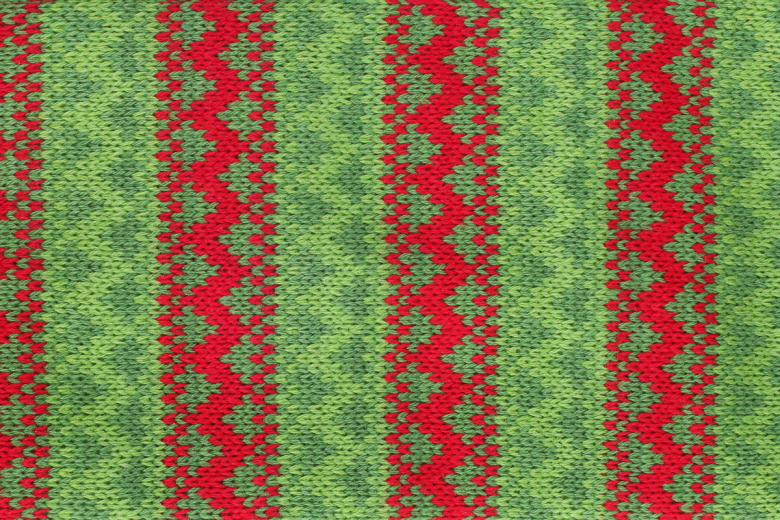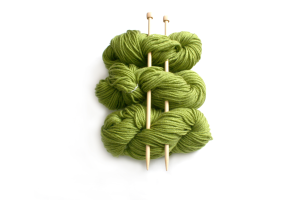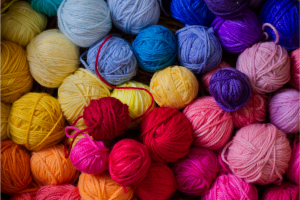Knitting is more than a craft; it’s an expressive art form that bridges tradition and innovation. For centuries, knitters have used this technique to create everything from simple garments to intricate masterpieces. What sets a truly remarkable piece of knitting apart is the patterns woven into it. Patterns are the heart of knitting—they transform a plain fabric into a tapestry of design, texture, and color.
Today, the possibilities for experimenting with knitting patterns are virtually endless. Whether you’re inspired by the timeless elegance of Scandinavian motifs, the playful zigzags of chevron designs, or the sophistication of modern geometric styles, patterns open the door to creative freedom. They allow knitters to personalize their work, crafting unique pieces that reflect their personality and artistic flair.
In this guide, we’ll delve into the exciting world of knitting patterns. Whether you’re a beginner eager to expand your skills or an experienced knitter looking to push boundaries, you’ll discover valuable tips and techniques for exploring and innovating with patterns. From selecting the right materials to mastering advanced techniques like intarsia and lace knitting, this article will equip you to elevate your craft and create one-of-a-kind pieces.
Knitting is not just about creating; it’s about storytelling. Every pattern tells a tale, whether it’s inspired by cultural heritage, nature’s beauty, or personal emotions. The interplay of stitches, colors, and textures transforms yarn into a visual language, making each knitted piece a canvas for self-expression. This transformative power is what draws knitters of all skill levels to explore and innovate with patterns.
The beauty of knitting patterns lies in their versatility. They can be simple and repetitive, offering meditative comfort, or intricate and challenging, providing a satisfying sense of accomplishment. Patterns are also a gateway to connection, linking the past to the present. Many traditional designs have been passed down through generations, preserving cultural identities while inspiring modern adaptations. This fusion of old and new is what keeps the craft dynamic and evolving.
As you embark on this exploration, you’ll find that knitting patterns aren’t just about aesthetics—they’re also about function. Patterns can shape garments to fit perfectly, add durability to everyday items, or even enhance the coziness of a blanket or scarf. By mastering the art of patterns, you gain the ability to blend beauty and utility seamlessly, elevating every project you undertake.
This guide is here to inspire and empower you, no matter where you are in your knitting journey. Together, we’ll uncover the secrets of timeless techniques, explore innovative trends, and spark ideas that will transform your knitting into an art form all your own. Grab your needles, choose your yarn, and let’s dive into the endless possibilities that knitting patterns offer!
Let’s embark on this journey to unlock the full potential of your knitting projects and inspire new levels of creativity!
Understanding Knitting Patterns: From Basics to Advanced
Simple Stitches and How They Form Complex Patterns
Every intricate knitting pattern starts with simple stitches. Mastering basic stitches, such as knit (K) and purl (P), lays the foundation for creating beautiful designs. These two fundamental stitches can be combined in countless ways to form ribbing, seed stitch, and garter stitch patterns. As you become more confident, incorporating variations like slip stitches, cables, and increases or decreases will open up endless creative opportunities.
Even complex patterns like lace and mosaic knitting are built from these elementary techniques. The key is understanding how individual stitches interact to create textures and visual effects. Practice combining basic stitch sequences to observe how they evolve into intricate designs over time.
How to Choose Yarns and Needles for Different Patterns
The choice of yarn and needles plays a crucial role in determining how patterns appear and feel. Different textures, weights, and fiber types bring unique characteristics to your projects:
- Thin yarns (fingering or lace weight) highlight delicate details in lace or intricate patterns.
- Chunky yarns make bold patterns like cables stand out.
- Smooth yarns allow stitches to pop, while textured or novelty yarns can obscure intricate details.
Needle size also matters. Larger needles create looser stitches, which are ideal for lace or airy patterns, while smaller needles ensure tight, structured designs. Pairing the right needle size with your yarn ensures the pattern maintains its intended definition and texture.
Exploring Traditional and Modern Patterns
Scandinavian, Argyle, Chevron, and Beyond
Knitting patterns are a cultural and historical treasure. Traditional designs like Scandinavian snowflakes or Fair Isle patterns showcase symmetry and timeless beauty, while Argyle’s diamonds offer a classic yet playful touch. Chevron patterns, with their bold zigzags, bring a sense of modern energy to any project.
Experimenting with these styles allows you to learn their unique techniques while infusing your work with a mix of history and contemporary flair. For beginners, starting with simplified versions of these patterns is a great way to build skills while achieving visually stunning results.
How to Combine Different Patterns in One Piece
Mixing patterns can result in striking designs, but it requires careful planning to maintain harmony. Consider these tips:
- Start Small: Combine patterns in small areas, such as borders or accents.
- Balance Complexity: Pair a busy pattern with a simpler one to avoid overwhelming the piece.
- Color Coordination: Use consistent color themes to tie disparate patterns together seamlessly.
Sketch your design before starting and knit swatches to preview how the patterns interact visually.
Colors and Contrasts: Bringing Patterns to Life
Tips for Choosing Impactful Color Palettes
Color transforms patterns into vibrant, expressive works of art. When selecting a palette:
- Use contrasting colors to highlight intricate designs.
- Opt for complementary colors for a harmonious look.
- Play with gradients or ombré effects to add depth.
Neutral tones, such as white, gray, or beige, make bold patterns stand out, while bright or jewel tones add energy to simpler designs.
Advanced Techniques: Intarsia, Jacquard, and Lace Knitting
Adding Textures and Delicate Details
For those ready to challenge their skills, advanced techniques open doors to creative exploration:
- Intarsia: Perfect for creating large blocks of color or graphic designs without carrying yarn across rows.
- Jacquard (Fair Isle): Adds complex multi-color patterns by carrying strands behind your work.
- Lace Knitting: Uses yarn overs and decreases to form delicate, openwork patterns.
Each of these techniques adds a unique dimension to your knitting, elevating the artistry of your projects.
Common Mistakes When Working with Complex Patterns
How to Identify and Fix Problems
Even seasoned knitters encounter mistakes in complex patterns. Here are tips to troubleshoot:
- Miscounted Stitches: Regularly count stitches in pattern repeats. Use stitch markers to stay on track.
- Dropped Stitches: Fix with a crochet hook before they unravel further.
- Tension Issues: Maintain consistent tension, and block finished pieces to correct minor irregularities.
Mistakes are a natural part of the learning process, and addressing them will build your skills over time.
Inspiration and Resources to Create Your Own Patterns
Where to Find Patterns and Customize Them
The world of knitting offers endless inspiration. Online platforms like Ravelry, Pinterest, and knitting blogs are treasure troves of free and paid patterns. Books on knitting design can help you understand the structure of patterns, enabling you to modify or create your own.
Experiment with combining different elements, like stitches or motifs, to craft personalized designs. Sketch ideas on graph paper or use knitting design software for more complex creations.
By exploring these resources and techniques, you’ll be well-equipped to push the boundaries of your knitting and bring your unique visions to life.
Innovate with Confidence: Transforming Your Knitting into Works of Art
Knitting is more than a practical skill—it’s a creative journey that allows you to express your personality and artistry. By understanding the fundamentals of patterns, exploring traditional and modern designs, and mastering advanced techniques, you can elevate your knitting projects from functional pieces to true works of art.
Innovation in knitting doesn’t require starting from scratch. Sometimes, it’s about experimenting with color combinations, blending textures, or combining patterns in new and unexpected ways. Each project is an opportunity to challenge yourself, learn something new, and expand your creative boundaries. Mistakes along the way aren’t failures but stepping stones to growth, making the final results all the more rewarding.
The beauty of knitting lies in its versatility. Whether you’re crafting a cozy scarf with bold chevron patterns, a sophisticated sweater featuring Scandinavian motifs, or a delicate lace shawl, every piece you create carries your unique touch. By embracing creativity and having the confidence to experiment, you can transform even the simplest knitting projects into extraordinary masterpieces.
Now, it’s time to pick up your needles, choose a pattern that excites you, and let your imagination take the lead. The possibilities are endless, and your next knitting project could be your best yet. Knit boldly, create fearlessly, and watch as your work inspires both yourself and others.
Knitting is more than just a hobby; it’s a connection to a timeless tradition that continues to evolve with each stitch. Through patterns, you can honor the past while making something entirely your own. Whether you draw inspiration from age-old techniques or contemporary trends, knitting offers endless possibilities for self-expression and innovation.
As you explore the world of patterns, remember that the journey is just as meaningful as the final product. The rhythm of knitting, the joy of seeing a design take shape, and the satisfaction of completing a project are experiences that bring fulfillment and pride. Celebrate your progress, embrace your creativity, and don’t be afraid to try something new—it’s in those moments of experimentation that the most remarkable pieces are born.
Every knitting project tells a story—your story. From the selection of colors and textures to the patterns you choose, each piece reflects your individuality and creativity. Whether you’re knitting for yourself, a loved one, or a special occasion, your work carries meaning and emotion that no machine-made item can replicate.
So, as you finish this guide and prepare to cast on your next project, let the knowledge you’ve gained fuel your enthusiasm. Dive into the limitless world of knitting patterns with confidence and curiosity, knowing that every stitch you create is a step toward crafting something truly unique. Happy knitting!




